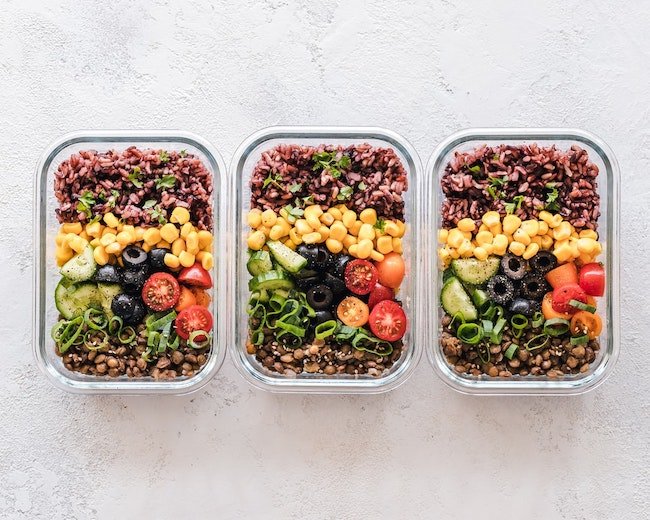How To Cook Nutrient-Dense Foods for Your Family with Culinary Nutrition By Mandy Patterson
Encouraging your family to eat nutrient-dense foods is no small feat. You can present them with a platter of raw vegetables, but you can’t force them to eat it.
As a mom of six, Doctor of Naturopathy, and Master Gardener with Purdue University, I’ve left no stone unturned on our journey to eating more nutrient-dense foods. The answer I’ve discovered is culinary nutrition, and I’m going to share three ways you can use it in your kitchen.
What Is Culinary Nutrition?
When you think of culinary nutrition images of Emeril Lagasse, Bobby Flay, and other Food Network stars probably flash behind your eyes. The truth is, a stay-at-home mom can serve up delicious and nutritious food just as easily as Julia Child, and without having to master the art of French cooking.
So, if culinary nutrition isn’t the idea of becoming a five-star chef, what is it? It’s the combination of the wellness and technical sides of food.
Culinary nutrition is a holistic approach that considers the nutritional components of food as well as its emotional and sensory appeal. The driving force behind culinary nutrition is the use of food restoratively and therapeutically to promote vibrant health and flavorful cuisine.
Why Do We Need Culinary Nutrition?
According to research, people’s daily lives are influenced by a chronic feeling of time constraint. What does the feeling of a time constraint have to do with culinary nutrition?
It causes them to adopt time-saving eating habits such as choosing processed and convenience foods and spend less time preparing and eating food. Food prepared away from home is associated with a lower quality diet and higher body mass index.
On the other hand, food prepared at home is associated with a higher intake of fruits, vegetables, fiber, folate, vitamin A, and a lower intake of fat.
Letting the idea of a time constraint guide your dietary choices can feel like being trapped on a sinking boat. It will eventually cause you to drown in poor health outcomes.
Three Ways to Practice Culinary Nutrition
You know what culinary nutrition is and why you need to practice it, but how do you implement it in your kitchen? Here are three ways to practice culinary nutrition and present your family with more nutrient-dense foods that they will eat.
Learn What Your Family Likes to Eat
A huge part of preparing nutrient-dense food for your family is knowing what food they like to eat. Food is not only a source of energy. There is an emotional component to food that everyone experiences. Imagine eating your grandma’s chocolate chip cookies from when you were a kid. I bet it conjures up a feeling of nostalgia and perhaps a mouth-watering, craving for cookies.
There may be some foods that are nutrient-dense, like broccoli, that your family had a bad experience with. For example, you all came down with the stomach bug after eating broccoli cheddar soup.
The first step to culinary nutrition is cooking food that your family likes.
Cook Seasonally
Now that you’re cooking foods your family wants to eat, you can begin to cook seasonally. Remember, culinary nutrition is about combining food science with cooking skills. Instead of taking college classes on macronutrients and vitamins and minerals, you can cook seasonally.
Seasonal produce is generally harvested at its peak, so it retains its full nutrient and vitamin content. You don’t have to memorize how many carbs are in a sweet potato. Seasonal foods support season specific needs. For example, after winter your body craves detoxification, and to shed any extra weight, spring vegetables like spinach help to alkalize your bloodstream and give you energy.
Not to mention, seasonally harvested fruits and vegetables are juicier and more vibrant tasting!
Take Time to Plan And Prep
Planning the foods your family will eat in the week or month ahead is a great way to implement the art of culinary nutrition. Not only that, but meal planning is also associated with a healthier diet and less obesity. Thirty minutes on a Sunday night to plan the food you will cook means you’re choosing health over convenience, which is a core tenet of culinary nutrition.
Cooking nutrient-dense foods for your family doesn’t have to be hard. Use these strategies of culinary nutrition to kickstart your family’s health journey and start eating nutritious and delicious foods.
I’m Mandy Patterson, Naturopathic Doctor and Functional Medicine. My entire life I have been pursuing wellness. As an occupational therapist for 18 years, I have worked in all sectors of health care. Although I loved my job as an occupational therapist, I felt that as health care professionals we are trained to be reactive, versus proactive, in patient care.
Instagram @mpattersonnd


